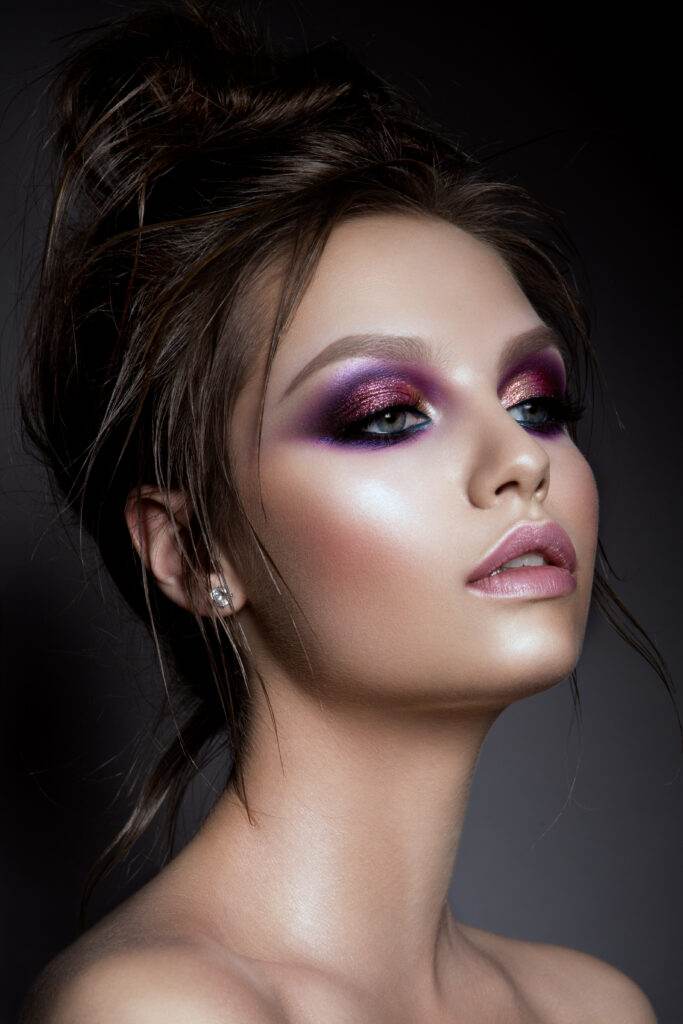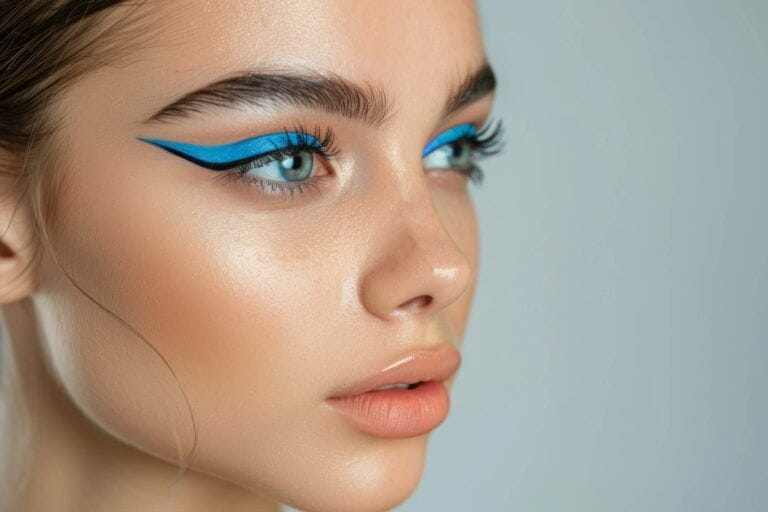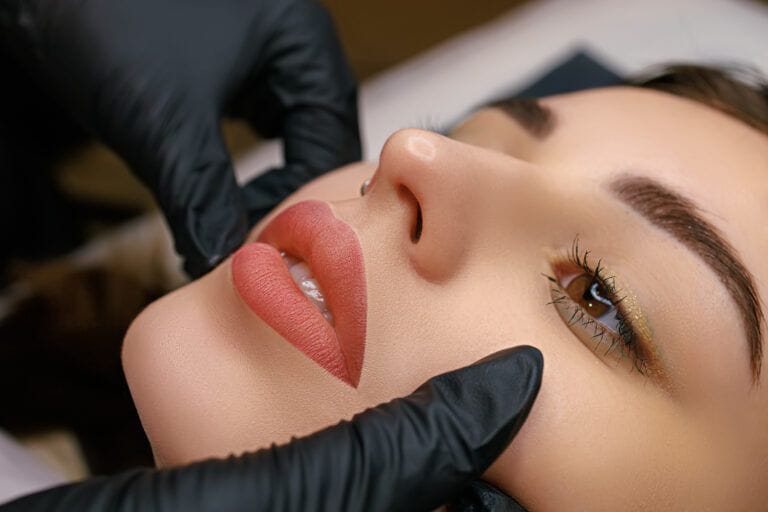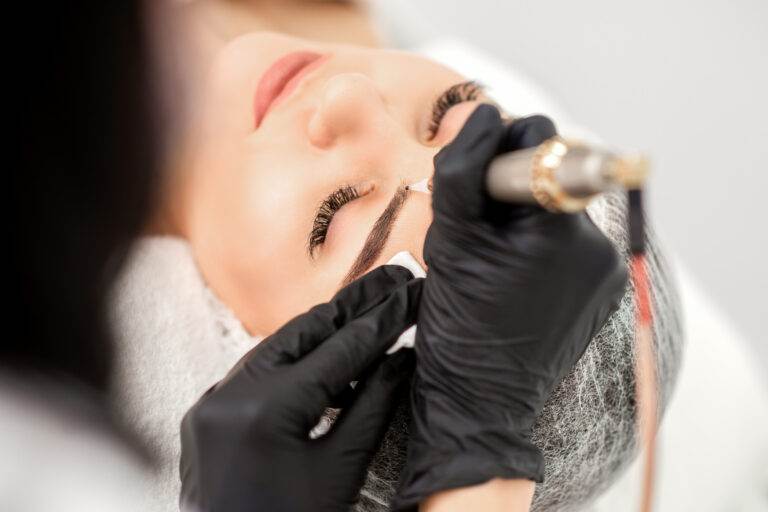The art of permanent makeup has gained popularity in recent years as a way to enhance one’s appearance and save time on daily makeup routines. This technique involves the application of pigments to the skin, mimicking the look of makeup. Permanent makeup is often used on areas such as eyebrows, eyeliner, and lip color.
The art of permanent makeup: definition and purpose
Permanent makeup, also known as micropigmentation or cosmetic tattooing, is a cosmetic procedure in which pigments are implanted into the dermal layer of the skin. The purpose of permanent makeup is to enhance facial features and create a long-lasting effect. This can be especially beneficial for individuals with sparse eyebrows, uneven lip color, or those who are allergic to traditional makeup products.
Benefits and significance of permanent makeup
Permanent makeup offers several benefits and holds great significance for many individuals. Some key advantages of permanent makeup include:
- Time-saving: With permanent makeup, individuals can save time on their daily beauty routine by eliminating the need for applying makeup daily.
- Enhanced appearance: Permanent makeup can help enhance and define features, such as eyebrows and lips, providing a natural and aesthetically pleasing look.
- Confidence booster: The ability to wake up with well-defined eyebrows or eyeliner can boost one’s self-confidence and improve overall self-esteem.
- Convenience: Permanent makeup is resistant to smudging or fading, making it ideal for individuals who lead active lifestyles or engage in activities such as swimming or sports.
- Medical reasons: Permanent makeup can also be used for medical reasons, such as camouflage for scars, areola reconstruction after breast surgery, or to cover up vitiligo or alopecia.
Overall, permanent makeup offers a convenient and long-lasting solution for individuals looking to enhance their appearance and save time on their daily beauty routine. However, it is important to consult with a skilled and experienced professional to ensure safe and satisfactory results.
The Different Techniques of Permanent Makeup
Microblading: enhancing eyebrows with a natural look
Microblading is a popular technique used in permanent makeup to enhance and shape eyebrows. It involves using a handheld tool with ultra-fine needles to create fine, hair-like strokes and implant pigment into the skin. This technique allows for precise control, resulting in natural-looking and fuller eyebrows. Microblading is suitable for individuals with sparse or over-plucked eyebrows, as it can fill in gaps and create a more defined shape.

Permanent eyeliner: defining the eyes with precision
Permanent eyeliner is another technique in permanent makeup that helps define and enhance the eyes. It involves applying pigment along the lash line to create the appearance of eyeliner. This technique can add definition and make the eyes appear more vibrant and awake. Permanent eyeliner can be customized to achieve different looks, ranging from a subtle and natural effect to a more dramatic and bold appearance. It is a popular choice for individuals who have difficulty applying eyeliner or want to save time on their makeup routine.
Comparison table:
| Microblading | Permanent Eyeliner |
|---|---|
| Natural-looking eyebrows | Enhanced and defined eyes |
| Handheld tool with ultra-fine needles | Application of pigment along lash line |
| Fills in gaps and creates shape | Adds definition and vibrancy |
| Suitable for sparse or over-plucked eyebrows | Customizable for different looks |
These are just two examples of the different techniques used in permanent makeup. Each technique offers its own unique benefits and can be tailored to individual preferences and needs. When considering permanent makeup, it is essential to consult with a skilled and experienced professional to discuss the best technique and achieve the desired results.
Preparing for Permanent Makeup Application
Consultation and patch test: understanding the procedure and potential reactions
Before undergoing permanent makeup application, it is crucial to schedule a consultation with a skilled and experienced professional. During this consultation, the client and artist can discuss the desired results, any concerns or questions, and the potential risks and benefits of the procedure. The artist may also perform a patch test to check for any allergic reactions to the pigments used. This test is usually done on a small area of the skin and should be done a few days before the actual application to ensure a safe and suitable outcome.
Preparing the skin for optimal results

To achieve the best possible results from permanent makeup, it is important to properly prepare the skin. This includes avoiding any blood-thinning medications or substances, such as aspirin or alcohol, for a few days before the application. The client should also refrain from excessive sun exposure and tanning as it can affect the healing process. It is recommended to keep the area clean and free from makeup before the appointment to ensure a clean canvas for the artist.
During the procedure, the artist will use sterilized equipment and adhere to strict hygiene practices to minimize the risk of infection. Following the application, it is important to follow the aftercare instructions provided by the artist to promote proper healing and long-lasting results. It is also important to attend any necessary touch-up sessions as recommended by the artist to ensure the desired outcome.
In conclusion, preparing for permanent makeup application involves scheduling a consultation, understanding the risks and benefits of the procedure, and properly preparing the skin for optimal results. By following these steps and working with a skilled professional, individuals can achieve the desired permanent makeup look they desire.
The Permanent Makeup Application Process
Numbing techniques to minimize discomfort
Before the permanent makeup application begins, numbing techniques may be used to minimize any discomfort during the procedure. These can include topical anesthetics or local anesthesia injections, depending on the client’s preferences and the area being treated. The artist will discuss the options and ensure the client is comfortable throughout the process.
Step-by-step explanation of the procedure
The permanent makeup application process typically involves the following steps:
- Designing: The artist works with the client to design the desired look, considering facial features and personal preferences.
- Prepping the skin: The area to be treated is cleansed and prepared for optimal results, which may include removing any makeup or oils.
- Application: The artist carefully applies pigments to the skin using sterile tools, following the predetermined design for precision.
- Multiple sessions: Depending on the desired outcome, multiple sessions may be required for touch-ups or additional layering of pigments.
- Aftercare instructions: The artist provides detailed aftercare instructions to promote healing and maintain long-lasting results, such as avoiding excessive sun exposure and refraining from touching or picking at the treated area.
- Follow-up appointments: Follow-up appointments are scheduled to monitor the healing process and address any concerns or adjustments.
By following these steps and working with a skilled and experienced professional, individuals can undergo a successful permanent makeup application process. It is essential to communicate openly with the artist and follow their guidance for the best possible outcome.
Aftercare and Healing
Proper care instructions to ensure long-lasting results
After the permanent makeup application, proper aftercare is crucial to ensure long-lasting results. The artist will provide detailed instructions, including:
- Avoiding excessive sun exposure, as UV rays can cause fading of the pigments.
- Refraining from touching or picking at the treated area to prevent infection and color loss.
- Using recommended skincare products, such as gentle cleansers and moisturizers, to maintain the skin’s health and the pigments’ longevity.
- Avoiding swimming pools, saunas, and steam rooms during the initial healing period.
Following these care instructions will aid in the healing process and help maintain the desired results for an extended period.
Common healing process and potential side effects
During the healing process, individuals may experience common side effects, including:
- Mild redness and swelling around the treated area, which typically subsides within a few days.
- Itchiness and dryness as the skin heals and regenerates.
- Light scabbing or flaking of the pigmented area, which should be left to heal naturally without scratching or picking.
It is essential to note that the healing process varies for each individual, and some may experience minimal discomfort or side effects. However, if any severe or prolonged symptoms occur, it is crucial to consult with the artist or a medical professional.
Understanding the aftercare instructions and potential side effects will help individuals navigate the healing process and ensure the best possible outcome for their permanent makeup application.








